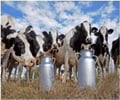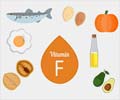Types of pasteurizations
Continuous Method
Holding Time
When fluids move through a pipe, either of two distinct types of flow can be observed.
The first is known as turbulent flow which occurs at high velocity and in which eddies are present moving in all directions and at all angles to the normal line of flow. The second type is streamline, or laminar flow which occurs at low velocities and shows no eddy currents. The Reynolds number , is used to predict whether laminar or turbulent flow will exist in a
pipe:
*Re < 2100 laminar
*Re > 4000 fully developed turbulent flow
There is an impact of these flow patterns on holding time calculations and the assessment of proper holding tube lengths.
The holding time is determined by timing the interval for an added trace substance (salt) to pass through the holder. The time interval of the fastest particle of milk is desired. Thus the results found with water are converted to the milk flow time by formulation since a pump may not deliver the same amount of milk as it does water.
Note: The formulation assumes flow patterns are the same for milk and water. If they are not, how would this affect the efficiency of the pasteurization process?










